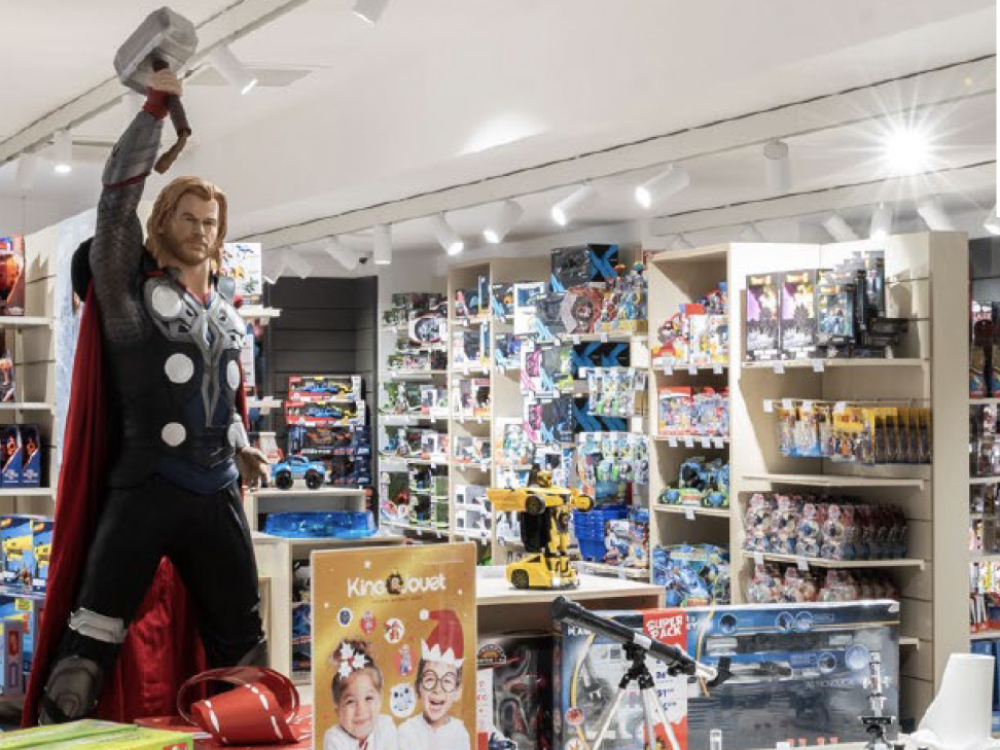Toys - Games and Toys in 2024 in France : An Industry Between Tradition and Modernity
By Mulder, 14 january 2025

The year 2024 marked a pivotal period for the French games and toys market, oscillating between economic stabilization and innovation. With sales reaching 4.3 billion euros, the sector's performance recorded a slight 0.7% drop in value, a dynamic that nevertheless remains much better than that observed in other major European markets, such as Germany (-2.3%) and the UK (-3.7%). This resilience is due in part to a targeted sector strategy, combining product innovation, diversification of the offering and adaptation to new consumer buying patterns.
The end of the year played a crucial role in the market's resilience, particularly in December, when sales were up 4.5% on the previous year. Despite a tense economic climate, French consumers confirmed their commitment to buying toys, particularly during the festive season. This phenomenon of late purchases accounted for 31.5% of annual sales, compared with 30% in 2023, illustrating the central role of Christmas in the sector's dynamic. This performance is reinforced by the success of specialist and multi-specialist chains, which saw their sales increase by 6.3%, while hypermarkets and online sales excluding marketplaces declined by 7.6% and 6% respectively.

Among the major trends of 2024, the rise of “kidultes” (consumers aged 12 and over) is particularly noteworthy. This segment accounted for 29% of annual sales, driven by categories such as card games, construction sets and popular licenses. The top 10 Christmas sales, dominated by products such as Skyjo (Blackrock Games), Architecture Notre Dame de Paris (LEGO), and premium Pokémon collections, reflect this trend. Adult consumers help to maintain a diversity of offerings and partially offset the effects of demographic decline.
Indeed, the falling birth rate (-2.2% in 2024, or 663,000 births compared with 843,000 in 2010) has reduced the target population of under-12s, resulting in an estimated 1.5% contraction in annual toy market sales. This demographic reality represents a structural challenge for the industry, prompting manufacturers and distributors to reinvent themselves. In response, segments such as construction toys (+20%), strategy cards (+14%) and storytellers (+27%) stood out, reflecting growing demand for innovative, educational products.

Licensed products continue to play a key role in boosting sales, accounting for 27% of annual sales, up 6%. Pokémon remains the flagship franchise for the fourth year running, but other properties, such as Lilo & Stitch, are also showing significant growth. In addition, new releases, which account for 26% of annual sales, confirm the central role played by innovation in the market's appeal. Viral trends, often driven by social networks, have also helped create a buzz around specific categories such as interactive toys and plush toys.
The omnichannel strategy of specialist retailers has played a major part in these successes. With 2,000 stores across the country, physical retailers continue to attract consumers with differentiated assortments, exclusive products and enhanced customer service. Initiatives such as sales team training and the inclusion of eco-responsible criteria in product selection have also consolidated the position of specialist stores in the face of online competition.

Sustainability remains a major issue for the industry, notably through the implementation of EPR (Extended Producer Responsibility). This initiative, supported by the AGEC law, aims to collect, reuse and recycle used toys, with over 30,000 tons collected by 2024. In coordination with the eco-organization Ecomaison, 6,000 permanent and seasonal collection points have been deployed, testifying to the mobilization of 2,500 manufacturers and distributors. To further raise public awareness, a nationwide tour in April 2025 will feature workshops focusing on toy repair and reuse.
However, challenges remain, particularly when it comes to the safety of toys sold on online marketplaces. A study by the FJP (Fédération Française des Industries Jouet-Puériculture) reveals that 86% of toys marketed by third-party sellers do not comply with European standards, putting children at risk. The revision of the European Toy Safety Directive represents a crucial opportunity to close this regulatory loophole and guarantee high safety standards for all products sold in Europe.

The year 2025 promises to be full of challenges and opportunities for the toys and games sector. While the economic context remains fragile, industry players are counting on the return of blockbuster films such as Avatar and Lilo & Stitch to boost sales throughout the year. In addition, International Play Day, adopted by the United Nations, will be celebrated on June 11, 2025, highlighting the importance of play in children's development and family well-being.
Manufacturers and distributors also plan to step up their efforts to innovate and adapt to consumer expectations, whether by offering eco-responsible products or meeting the growing demand for educational and interactive products. Finally, the development of the omnichannel model, combined with greater differentiation of assortments, should enable the market to maintain its resilience and open up new prospects.
In conclusion, the French toys and games market, while facing structural challenges, continues to demonstrate a remarkable ability to adapt. Through a strategy combining innovation, sustainability and proximity, the industry is committed to meeting consumer expectations while preparing for the future. Far from being mere entertainment, gaming is a pillar of personal development and social bonding, for all ages. Let's play together, because the future of toys is also the future of our dreams and creativity.
(Source: press release)

